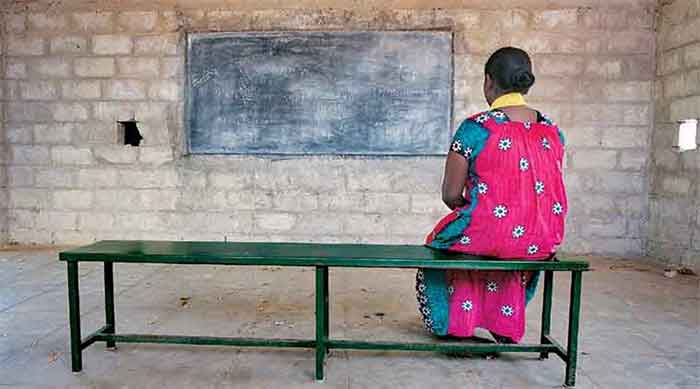
Who is a teacher?
In a loose sense a teacher would be anybody including Mahatma Gandhi who was not a teacher in any school or college and Ambedkar who was a teacher in a college for some time. On the other hand, only the school teachers are called the teachers in a strict sense and not the university teachers who are called professors. There can be both similarity and difference between the school teachers and the university teachers. Both school and university teachers are influenced by the notion of guru. This is exemplified by the observance of Radhakrishnan’s birthday as guru divas. However, the notion of guru is in sync with the caste system.
The academic theorization about teachers
The school teacher has been described as a meek dictator (Prof. Krishna Kumar) or lacking voice and agency (Prof. Poonam Batra). If both the conceptions are taken together then a question arises – can we give voice and agency to a dictator? A balanced view could be that there are some teacher-dictators who need to be tamed while others who need to be granted more voice and agency. The usual theorisation is worried about the teacher’s power over the students – not the vice versa. Only the neo liberal market framework can assume the students to have more power than the teachers – for example the discourse of parentocracy. But even without this, if we take into account the social stratification in India, we can assume such a relationship to some extent. It’s a bit difficult for a dalit teacher to be dictatorial towards upper caste students. This is where a rupture in the traditional theorization of teacher-student relation (Guru – Shishya, father / mother figure etc) happens and the influence of macro power structure is recognised.
Discourse regime and 360-degree discrimination
Various discourses operate in the university system with respect to various constituents of the university. The discourse of ‘academic freedom’ supports teachers in general. University administrators are also academicians and therefore entitled for academic freedom. The feminism discourse stands for additional support to women teachers. The discourse of ‘democratic pedagogy’ champions the voice of the students. The discourse of ‘inclusive education’ stands for additional support to dalit students.
Not only that there is no discourse in the university discourse regime that recognises the special situation of a dalit teacher, but also additionally some of these discourses can go against the dalit teacher. The university administration can discriminate the dalit teacher under the cover of academic freedom and excellence. The upper caste colleagues can use the excuse of merit and excellence to belittle the dalit colleague while being oblivious of the fact that they are the arbiters of what is merit and excellence. Academic theorization is very clear that the teacher is not omniscient. But the benefit of this discourse is not given to the dalit teachers. One of the negative features of the ‘professional’ discourse is that it is excellence oriented and not inclusion oriented. Therefore, it gives rise to stratification – elite and masses within the profession. We can see it among lawyers and doctors. The dominant discourse in academics is the ‘professional’ discourse – oriented to excellence than inclusion.
The discourse of ‘democratic pedagogy’ giving autonomy to the students can be used by the upper caste students against a dalit teacher. The feedback system designed to ensure the voice of students can be misused by the upper caste students to vilify the dalit teacher. The feedback system assumes the agency of students. Agency is no agency if it is pre-determined to do only good and not bad. Therefore, if we assume agency, we have to assume that it can have negative consequences as well. If we assume agency with respect to students in higher education then we have to assume on the possibility of misuse of that agency. Teachers’ misuse of agency is very well documented, the well known case being Rohith Vemula. But academic theorization so far has not come to terms with the misuse of agency by the students. The theorization happens in a crude way when it is said that student politics is either good or bad.
Now one can see how the 360-degree discrimination works. A dalit teacher is discriminated from the top (the administration), from the side (the colleagues) and from below (the students). This is akin to a war situation when an area is invaded by both air and ground forces. Each strata/segment avails a particular discourse to discriminate the dalit teacher. This discrimination is not direct discrimination but it is indirect discrimination in the name of various normative desirables. Luckily the Supreme Court of India has finally taken cognizance of indirect discrimination.
Currently the term 360-degree audit is familiar. The 360-degree discrimination can be a useful term to understand the discrimination of a dalit in any organisation.
Sthabir Khora, Associate Professor School of Education, Tata Institute of Social Sciences
GET COUNTERCURRENTS DAILY NEWSLETTER STRAIGHT TO YOUR INBOX
Related posts:
Related posts:
Views: 0
 RSS Feed
RSS Feed















 April 11th, 2021
April 11th, 2021  Awake Goy
Awake Goy  Posted in
Posted in  Tags:
Tags: 
















